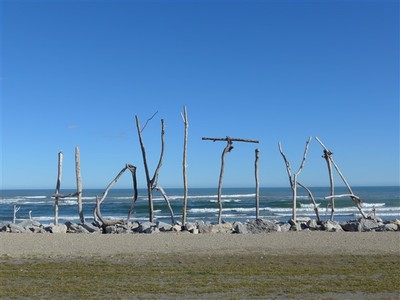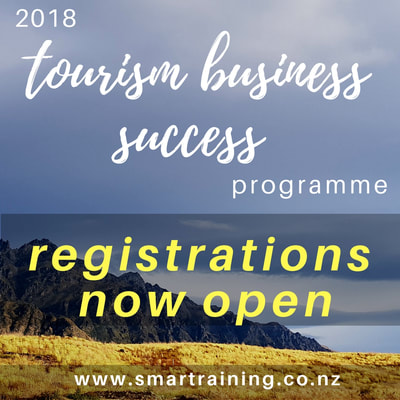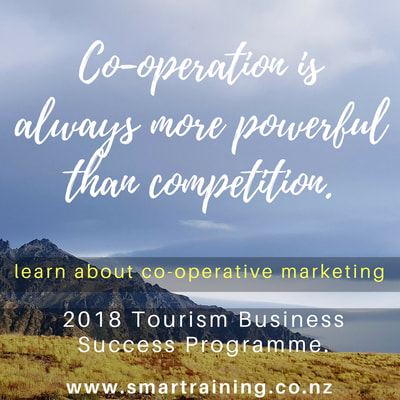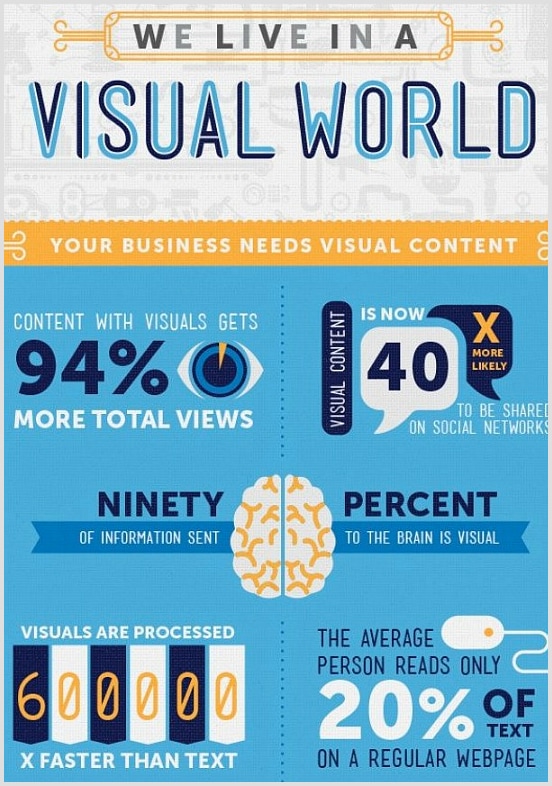Are you being approached by travel bloggers or social media influencers? Here's what to do!14/6/2019 Travel bloggers and social media influencers can be very beneficial in promoting your tourism business to a large group of people as they share stories and photos to their thousands of followers. They usually combine blogging with posts on Instagram and Facebook.
They can also dramatically help you increase your number of followers and provide great exposure for your business. Some do it professionally and make money through advertising, sponsorships or get paid to write about you. Others blog their way around the world and get free accommodation and activities this way. Either way, working with them can be very successful. Here are some tips to make to ensure the blogger or Instagrammer will meet your expectations. Whether you approach them, or they approach them, research them before you talk or to them, research them first:
Overall: do your product ‘fit’ with this influencer? After doing this research, it’s time to approach them or get back to them. Ask them:
Some bloggers will provide you with a proposal, others are very casual. By doing the research above, you’ll be able make a more informed decision as to whether you’d like to work with them! Till next time, Marijke
3 Comments
User-generated content is hugely powerful. It's when customers share photos and their experience about your business on social media. It's 'word-of-mouth marketing' and it's free! It works because it's much more credible when your customers say nice things about you than when you do it yourself.
So how can you make it easy for customers to share positive photos about your business or experience? It's simple. Create a photo opportunity at your business location that people can't resist. It can be a funny board with a hole for their face (cheesy, I know, but people love them!). If you do this, ensure it has your business name, website address and hashtag so it's easy to share. Another idea for a photo opportunity is a large 'prop' of some sort, something unique, cute, funny beautiful etc. I was at Houston, Texas yesterday and just had to take a pic of these huge cowboy boots (about 2m tall). What could you come up with for your business that people would want to take photos of? Generate a simple, short hashtag that relates to your business. To encourage people to use your hashtag, you could start a competition and offer a prize for the best photo with that hashtag. PS, have you checked out the new Tourism Business Success Programme yet? Click here for information about this exciting 9-month programme that will help you take your business from where you are now to where you want it to be! Only 10 spaces per location - registrations are now open! Till next week, Marijke Video, whether recorded or live, is becoming more and more important in social media. Did you know that:
Most tourism businesses are using Facebook, Youtube and Instagram, and those targeting the younger demographic also use Snapchat. All these platforms have a live streaming option: Facebook live, Youtube live, Instagram live and Snapchat. If you do decide to use live streaming, make sure you let your audience know beforehand! So, have a go - it may take a little practice, but once you get into the habit of making (short - no more than 2 mins) videos, you'll reap the rewards! I’m making a video myself at the moment and will share it with you in the coming week. Watch this space! I've found a little video that explains how to make a simple video using your i-phone. The filming quality of newer model smartphones is so good these days, that you can easily make a video yourself. And it looks authentic rather than too polished! I was amazed to hear that a friend ofmine was recently interviewed (and filmed) by a journalist for TV using a smartphone! Here's the tutorial. Till next week, Marijke My grandfather was a tulip grower during the last century and times were difficult in post-war Holland. They lived with 7 children - all girls - near a town that was bombed over 100 times during the war. But him and his brother managed to make a success of their business as they developed half a dozen unique tulip varieties. Now, some 65 years later, these beautiful tulips are still exhibited at the famous yearly Keukenhof Flower Show in Holland and are sold world-wide. You can imagine my surprise when I saw this variety - Flaming Parrot - in a garden centre here in Queenstown, New Zealand. (I actually got tears in my eyes..). I planted them last autumn and this is the result. I have given these bulbs to several friends as a present - with the story of my grandfather who developed this variety. It makes it much more personal and my friends love them too.. By telling a story, you can add value to your product or business. Whether it's the history, the people or whatever the background, it adds an extra dimension, something to remember you by and an emotional connection. Just like with these tulips. So, what are the stories you can tell about yourself and your business/products? Till next week, Marijke  Do you operate a business in Te Anau or Queenstown? Then this is your last chance to register for one of the Mailchimp courses NEXT WEEK 25 & 26 October 2017 and 7 & 9 November 2017 in Queenstown. If you would like to grow your direct bookings, then these courses will be invaluable to your business! Click here for more info!  Two weeks ago, I posted the Top 2017 Marketing Trends. The most mentioned trend in posts about 2017 Marketing Trends is Video (see last week's article). The second largest trend is Content. This is not really a new trend as creating fresh content for your website has been an important factor for improving your website's SEO for years. But it doesn't hurt talking about content for a bit. The easiest way to update your website and social media is visual content. Videos, stunning photos and infographics. Above is an example of an infographic. It's a great way to display content in a visual way. We are faced with so much information on a daily basis, that we've become a bit lazy when it comes to reading text. If information can be displayed in a more visual way, we are more likely to absorb it. So, include updating your website and social media weekly in your marketing planning with information that is relevant and interesting to your audience. Till next week, Marijke There’s nothing like a great photo to keep your website and social media channels up to date. Smartphones take the most amazing quality photos these days… And the great thing is that you always have it with you! I found some cool little videos on youtube with tips on how to take great (some very creative!) photos with your smartphone! Get out there this weekend and take some new pics. Have fun! Till next week, Marijke I recently heard a story of a Chinese visitor who was reprimanded at Auckland airport for smoking. The sign said ‘SMOKE FREE’. The visitor thought (understandably) that he was free to smoke.
Why not just say ‘NO SMOKING’? That way, there is no doubt. Lost in translation… If you are dealing with overseas visitors whose first language is not English and you provide information to them, whether written or verbal, try to think from their perspective. It’s about giving them a great experience, isn’t it? Being a Dutch native, I had no choice but to learn multiple languages at school as few other nationalities speaking Dutch. I was also lucky to live in France and the US when I was young and learnt French and English at a young age. And I also learnt German and Spanish in school. So, I have always been fascinated by language and fortunate to have the ability to view things from different cultural perspectives. Why is it so important to make it easier for international visitors to understand your messages?
How can you avoid your message being lost in translation? Here are 6 tips to provide better information to your international markets: 1. Put information on your website in the languages of your target markets. It doesn’t have to include EVERYTHING, just the info and products that apply to them. It can be in the form of a pdf. 2. Have a QR code on your brochure with a link to that information. 3. Get the information professionally translated and DO NOT use Google Translate. You can contact your RTO for recommended translation services. 4. Keep in mind that ‘kiwi English’ is difficult to understand for most other nationalities. Speak slow, use simple language (no jargon) and ensure people understand you! 5. Research cultural differences 6. Ask your customers with that nationality for feedback (is the information clear, is the guide easy to understand etc). Have a great weekend! Marijke
When you’re looking to buy a new car, decide on the next holiday destination, get ideas for your business, what do you do? You probably do research online. How often do you use Google in a day? So when you end up on a website that has the information you need, you tend to stay on that website and buy or book that product or service. Here are 6 tips to ensure your website provides the information your potential customers are looking for: Tip 1: What information do your customers need to know when they buy or book your product? Make it clear on the homepage of your website what you’re actually selling and what your unique selling points are (i.e. why they should come to you and not your competitor). Provide links to other parts of the site for more information. Tip 2: Assume your customers know nothing about you, your product, your region etc. Certainly don’t use jargon or place names that mean nothing to them. Include maps, photos and descriptions of what you’re selling. Provide in-depth information about everything that is relevant about your product, region etc. So, think about how you could make their buying decision easier by providing all the additional information they need. Oh, and don't forget to include info about yourself and your staff (including photos!) It adds credibility to your business! Tip 3: It’s not about how wonderful you say you are, it’s about what your customers say about you. Word of mouth has always been one of the most important marketing tools and sites such as Tripadvisor, Booking.com and your own testimonials will give more of an unbiased review of what you offer. E.g: http://www.smartourism.co.nz/about-us-testimonials/ Tip 4: Use great headlines and sub-headings. Almost 80% of website visitors jump from headline to headline or sub-head. Only 20% read word for word and the rest of us look for what we want in bold or highlighted text. Good headlines pull a reader into the copy. Use sub-heads every few paragraphs to appeal to readers who scan. Make them short and informative to point to key information a visitor may be after. Ensure your important keywords are included in the headlines and sub headings. Tip 5: Ensure your website is mobile friendly. More and more people are accessing your website through mobile devices. If your website is not responsive (this means that it adjusts itself to the mobile devices it's viewed on), they are less likely to look at your website as it is not easy to read and navigate it. Tip 6: Tell readers what you want them to do. Every web page should have a call-to-action. It might be ‘Subscribe to our newsletter or blog’, ‘Check availability’’, ‘Send me information’ or ‘Buy now! . Without telling visitors what you want them to do, they’ll do nothing at all. So, have a look at your website and make a list of what additional content you could add to provide all the information your customers need to buy your product or service. A little plug for 3 workshops/programmes coming up:
20 November 2015: Developing an international tourism distribution plan / how to work with trade Location: Te Anau For more info, go to: www.smartraining.co.nz 26 November 2015: Business Building Blocks - 5 Effective Marketing Techniques That Will Help you Grow Your Business Location: Queenstown (through Queenstown Chamber of Commerce) http://www.queenstownchamber.org.nz/business-building-blocks-5-effective-marketing-techniques-that-will-help-yo January 2016 start: Marketing for Success Programme: 12 months programme And the new Advanced Marketing for Success Programme For more info, go to: www.smartraining.co.nz You may have seen them around: Infographics. They are a visual representation of information or data, so that it can clearly explained and understood. People are getting more and more used to getting information presented in the form of videos, images or these infographics. Is it that we are getting lazier? Probably, but I believe our love for visual presentation is also due to the information overload we are dealing with. So, the easier you can represent information, the more likely your customers or audience will look at and remember your message. Last month, Tourism New Zealand published these great Market Snapshots on their corporate website. If you are operating a tourism business, you will find these very interesting reading! Here they are (click to enlarge): For a complete list of market infographics, visit: http://www.tourismnewzealand.com/markets-stats/research/infographics/
Have a great weekend! Till next week, Marijke I just got back from a great TRENZ - my 15th! (well, waiting for my flight at Auckland airport at the moment!)
I send wholesalers regular emails newsletters to update them on the products of the Smartourism Marketing Group (www.smartourism.co.nz) and it was great to hear how much they enjoy these updates and find the information useful! Email marketing can be one of the most effective marketing tools there is. We are all getting more and more messages into our inbox: emails, newsletters, social media alerts and more. And then there are other communication apps such as WhatsApp, Viber, and Skype. Ok, so how can you get your email recipients to read your messages? Here is the latest: Mobile friendly Almost 50% of emails are opened on mobile devices. So it is important that your e-newsletter is easy to read on mobile devices. Keep it short! Keep your message short so it’s easy for people to quickly read it and respond where needed. When sending an e-newsletter, the easiest way is to have an intro, then a link to more detailed information. This will also enable you to monitor how many people read it, which is very valuable information! Personalise it! If your message is personalised (like the emails you receive from me!), they are likely to be opened 6 times more than without their name. Make it relevant! Ensure the message you send is relevant to the person reading it. If it’s not, they tend to delete it. If you have a large database, you could split it in different target groups and tailor your message to their needs. If you need help with your email marketing, contact us! marijke@strategiesmarketing.co.nz Have a great weekend & till next week! Marijke Recently, Nielsen conducted a study on what type of content on websites most influences consumers.
They looked at: Branded Content - this is content you put on your website yourself about your product or service User Reviews - these are reviews by your customers of your product Expert Reviews - reviews done by experts about your product. On your own website, you will be saying how wonderful your product is, combined with beautiful photography, videos etc. This is all nice, but what people are most influenced by is if someone else says how wonderful you are! The research indicated that Expert Reviews have the most impact. This could include winning a relevant award or an endorsement by a celebrity. Idea: a video clip of a credible 'expert' will help your customers make a purchase. User Reviews are second. This includes sites like Tripadvisor (if you work in tourism) or customer reviews on your website. So, how could you influence your customers with Expert and User Reviews? Till next week, Marijke |
Categories
All
Archives
September 2021
AuthorMarijke Dunselman. Click here to read more about us! |























 RSS Feed
RSS Feed


